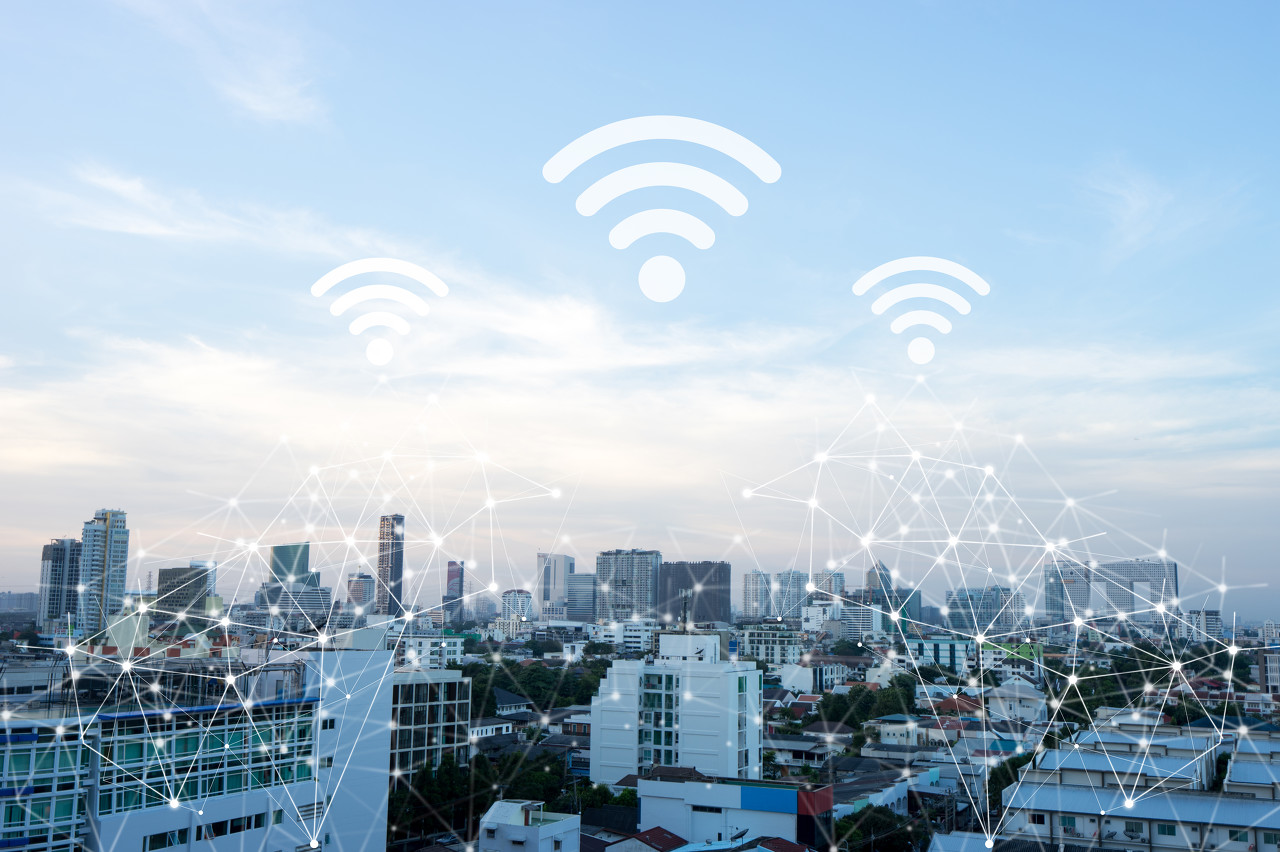What exactly is Wi-Fi 6?

Wi-Fi has been around for over two decades, and in that time it has become as ubiquitous and vital as the internet itself. Since Apple took the first step in 1999 to add Wi-Fi support to its then most advanced MacBook lineup, the technology has grown and split into countless standards, but has always had backwards compatibility all the way down to the early 1mb /sec connections.
Wi-Fi 6 is the latest upgrade to the standard -- and the first addition of additional spectrum in 15 years. Just over a year ago, the Wi-Fi Alliance finally approved Wi-Fi 6, billed as the biggest update to the wireless standard in more than a decade, but it brings more nuances and complexities than ever before.

So what exactly is it, and how can it help you? We've gathered answers to the biggest questions about Wi-Fi 6 here, so allow us to guide you through the wireless revolution.
What happened to Wi-Fi 1-5?
First, you didn't miss Wi-Fi 1 to 5. The Wi-Fi 6 name is part of the Wi-Fi Alliance's rebranding campaign. So far, standards have been referenced by the letter suffix of their technical name. The latest are "Wireless G" (802.11g), "Wireless N" (802.11n) and "Wireless ac" (802.11ac). To make them easier to distinguish, they have now been retroactively assigned the acronyms Wi-Fi 3, 4, and 5, respectively. Meanwhile, Wi-Fi 6 is more formally known as 802.11ax.
Another slight complication is that there are actually two versions of Wi-Fi 6 to watch out for. Standard Wi-Fi 6 uses new technology but broadcasts on the existing 2.4GHz and 5GHz bands. The second revision, Wi-Fi 6e, introduces an entirely new frequency band - 6GHz. We'll explain how this works for you later.
Every new iteration of the Wi-Fi standard has always been compatible with the previous one, and Wi-Fi 6 is no exception. But that doesn't mean you can buy a new router, grab your trusty old laptop and get a speed boost. To really feel the benefits, you need a device that supports Wi-Fi 6, which is currently limited to a handful of high-end phones and laptops, but that number is increasing, so if you're looking at new infrastructure, it's wise to Consider adding Wi-Fi 6 to your list of requirements.
Advantages of Wi-Fi 6
So what are the advantages of Wi-Fi 6? In short, the answer is throughput. In fact, there is a speed advantage, but it's almost a by-product; a single device connected via Wi-Fi 6 will have about 37% faster internet speeds, but with an increase in throughput -- that is, the router can process and send over the network The amount of data - could mean up to a 300% increase in real terms across the entire network.
Part of the reason for the increased throughput is the increase in capacity. While most access points are theoretically capable of publishing 254 internal IP addresses, in practice, most traditional wireless devices start having trouble managing connections around 70. Wi-Fi 6 devices are typically capable of managing up to 200 - and sometimes more - node environments, such as mesh Wi-Fi networks.
Increased throughput has a number of notable side effects—first, increased Wi-Fi throughput leaves more network available capacity for wired connections, which means they will also improve, albeit passively. We noticed a small but significant improvement in transfer speeds from the laptop to the NAS in a Wi-Fi 6 environment. Also, Wi-Fi 6 devices connected to a Wi-Fi 6 router can actually see a small improvement in battery life due to the way the Wi-Fi 6 router parses the signal in a more efficient way (called OFDMA). Think of it as a router implementing an ordered queuing system instead of trying to process every incoming signal at the same time.
Other technological advancements include the widespread use of MU-MIMO, a more advanced version of beamforming that "shapes" the signal waves around each target object, as opposed to traditional MIMO, which points the entire signal in the right general direction . Dynamic fragmentation means that packets can be composed of different sizes, so the system does not attempt to dynamically "fill" the normalized packet size. This reduces latency because routers don't wait for half-filled packets before transmitting. Also, in the case of Wi-Fi 6e, the signal can be broadcast on any frequency between 1GHz and 6GHz, instead of being limited to the two standard frequency bands of 2.4GHz and 5GHz, making the connection more reliable.
Do I need Wi-Fi 6?
So is it worth upgrading? There's no real "one size fits all" answer to this question, but when you're ready to upgrade, Wi-Fi 6 or Wi-Fi 6e should definitely be on your shopping list as more and more devices grow Publishing takes advantage of these. If you choose "6", you get network advantages, but the data is carried over the existing frequency band, so the difference you see on existing equipment may be limited.
If you're lucky enough to have a Wi-Fi 6-enabled device, you'll notice a small difference (we measured a 4Mb/sec jump on compatible smartphones). Overall, the combined improvements will add to a smoother, more stable network, even on networks with Wi-Fi 5 and Wi-Fi 4 devices.
Currently, Wi-Fi 6e with the additional 6GHz band is almost entirely available for network infrastructure (routers and access points) and offers buyers the opportunity to future-proof their networks for at least 10 to 15 years. Endpoint devices that support 6GHz are starting to emerge, and these devices will gain the greatest personal advantage. Like all cutting-edge technologies, Wi-Fi 6e currently has an early adopter premium, but may become more competitive in the future.
The overall message here is that Wi-Fi 6 will be the gift that keeps on giving. You might not notice a huge change today, but as the number of connected devices increases (IoT devices are a big part of that), you'll find faster and more stable connections to Wi-Fi 5 than devices in the same group gadget. You'll see further improvements over time as more and more devices natively support Wi-Fi 6. Also, once WPA3 becomes the standard for encrypted connections, you'll see it implemented in Wi-Fi 6 for a more secure network.
It's still early days for Wi-Fi 6. It has the potential to be a game-changer, especially as the widespread adoption of devices ranging from IoT devices to laptops will maximize the benefits of the new features. Today, you can still experience its value right away, but the technology won't stand still for long. The Wi-Fi Alliance has drafted Wi-Fi 7 (802.11be) for certification in just a few years. For now, however, Wi-Fi 6 and Wi-Fi 6e are the pinnacle of wireless networking.